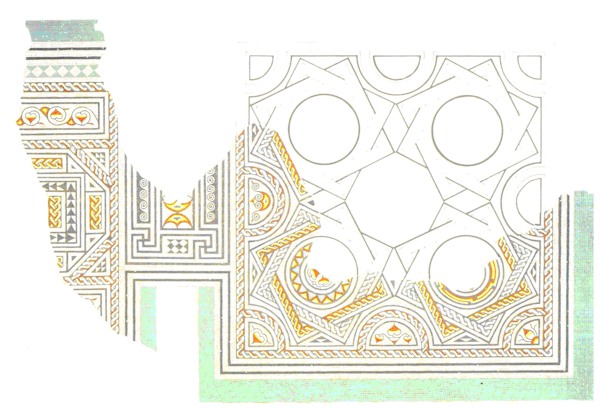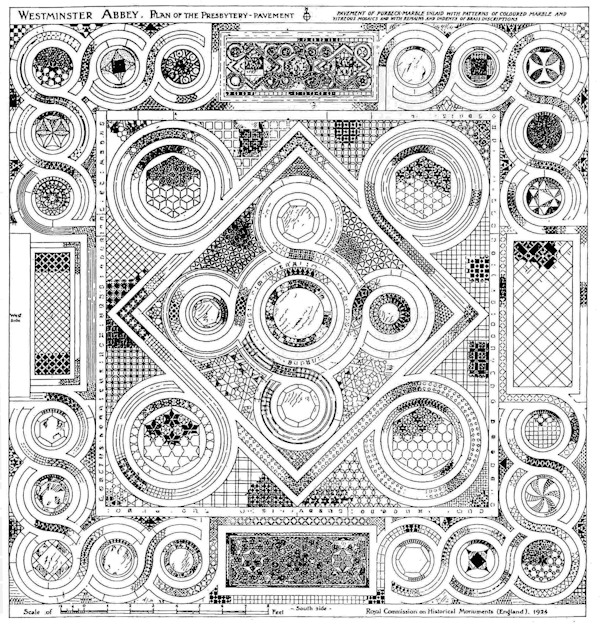Three Examples of the Geometric Pattern, the Quincunx, in England
 Henry III is inspired by Roman patterns to create a two church floors Continuing a theme of traditional floor patterns from a few weeks ago, here are three variations on the quincunx. The quincunx is the name given to an arrangement of five shapes, (usually the same, for example five circles, but not necessarily so) in which four sit around one centrally placed. The first is Roman and is at an ancient site at Hurcott in Somerset. The second and third were both created under the patronage of Henry III during the 13th century. The second is the Westminster Pavement, which is reasonably well known. The third is at Canterbury Cathedral and until I read about it in an article in the Glastonbury Review, here, I was not aware that it existed. This article suggests that Henry, who was patron of two geometric floors, was inspired by seeing Roman patterns. He is shown top left processing with a controversial relic, the precious blood of Christ. All of this is detailed in the Review article.
Henry III is inspired by Roman patterns to create a two church floors Continuing a theme of traditional floor patterns from a few weeks ago, here are three variations on the quincunx. The quincunx is the name given to an arrangement of five shapes, (usually the same, for example five circles, but not necessarily so) in which four sit around one centrally placed. The first is Roman and is at an ancient site at Hurcott in Somerset. The second and third were both created under the patronage of Henry III during the 13th century. The second is the Westminster Pavement, which is reasonably well known. The third is at Canterbury Cathedral and until I read about it in an article in the Glastonbury Review, here, I was not aware that it existed. This article suggests that Henry, who was patron of two geometric floors, was inspired by seeing Roman patterns. He is shown top left processing with a controversial relic, the precious blood of Christ. All of this is detailed in the Review article.
Those who wish to know more about the quincunx and its place in the Christian tradition of geometric art can read about it here.


